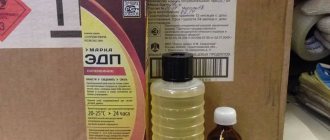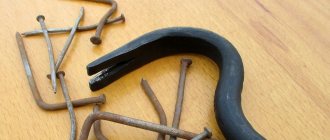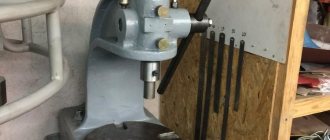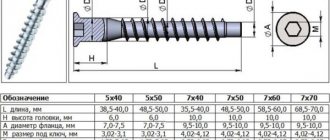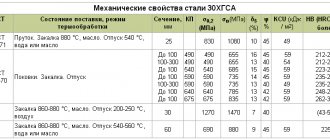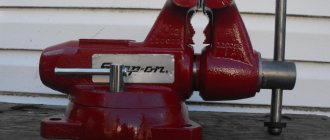What it is
The main substance of this type of glue is epoxy resin, which is a synthetic oligomer that cannot be used in its pure form. Each manufacturer's liquid two-component epoxy glue can be presented in different consistencies - liquid or solid, and differs in shade from honey color to dark tones. The two main components of epoxy adhesive are resin and hardeners, which give it adhesive properties. Hardeners can be polyethylene, polyamine, anhydride, triethylenetetramine. It is this tandem that forms a particularly strong polymer structure.
Important! When a chemical polymerization reaction occurs during the interaction of the oxide with the hardener, the molecules of the materials being fixed are reliably connected, and after hardening, the seam becomes resistant to external mechanical influences and the influence of chemicals.
What is epoxy, application instructions
The main polymer of the epoxy adhesive mass is a resinous substance. Resin (epoxy) has technical characteristics similar to glue and is sold together with a hardener. The scope of application of epoxy is similar to glue - agriculture and industry, therefore it is sold as an independent adhesive material. Also, the production instructions “How to use epoxy resin” indicate that it is suitable for pouring floors, making mosaics, design creativity and preparing building mixtures.
Properties and applications
Epoxy resin based adhesive has gained immense popularity due to its properties:
- The seam does not shrink during operation and cracks do not form on it.
- Provides good adhesion to different substrates and materials.
- Resistant to chemicals: oils, alkalis, solvents.
- Frost resistance down to -20 °C.
- Heat resistance up to +250°C.
- Resistance to mechanical stress.
- High elasticity of the seam.
- The finished adhesive joint can be varnished or painted.
- It is not a conductor of electric current.
- The curing speed is not determined by the thickness of the adhesive layer.
- Other components can be added to the composition if necessary.
- Good wear resistance, weather resistance and moisture resistance.
Advice! To change the color of the epoxy mixture, you can add other components and fillers, which will also help improve its properties. If you choose an aluminum additive, you can increase the strength of the composition, as well as thermal conductivity.
But epoxy glue has several negative qualities. For example, the setting speed, which is very reduced compared to other existing types. In a short period of time, you need not only to apply the composition, but also to fix it, have time to remove excess mixture, clean the work surface, hands or other materials.
If the glue has time to harden, it can only be removed mechanically. Epoxy glue is not suitable for gluing materials and surfaces that come into contact with food. It will also be impossible for them to glue Teflon, nickel, silicone, zinc, chrome and polyethylene surfaces. Soft materials will begin to deteriorate over time under the influence of the resins in the epoxy adhesive.
Numerous positive properties of epoxy adhesive allow it to be used in completely different industries, industries and areas:
- Construction.
- Automotive industry.
- Shipbuilding.
- Aircraft production.
- To solve everyday problems.
- In needlework.
Not only with metals
With proper preparation of surfaces, epoxy can be used to glue not only metal to metal, but also metal to other materials. Only Teflon, silicone and rubber will not be glued with it. Basically, if the glue has normal, reliable adhesion to the material, and the surfaces are sufficiently prepared, that is, cleaned, degreased and sanded, then wood, ceramics or porcelain, glass, and much more can be combined with metal.
Epoxy adhesives are good because they practically do not enter into chemical reactions with the materials being glued, even when in their liquid, most active state, and when they harden, they become completely chemically neutral.
This concerns chemical activity, and now let's talk about strength. Yes, compared to welding or even soldering, the adhesive connection is inferior, but it is universal. Moreover, dissimilar materials can be bonded with adhesives. After all, there are also metals that cannot be welded or soldered together.
In some processes, especially in chemical reactors, changing the structure of metals is unacceptable, and what is welding or soldering if not the diffuse penetration of some metals into others, with inevitable deformations of the crystal lattice and associated stresses? Epoxy glue, especially one specially designed for such cases, solves this problem with ease. The tightness provided by epoxy joints works even under high pressure, in particular in the depths of the sea or in aggressive environments.
Specifications
Epoxy glue is a synthetic substance that contains hardeners, fillers, solvents, plasticizers, and modifiers. After its application, an irreversible chemical reaction begins, which contributes to the formation of a very durable material.
Note! Repair and construction work using epoxy adhesive must be carried out at a temperature of +10 °C. Depending on environmental conditions, as well as the composition and manufacturer, complete hardening can occur within a period of 3 hours to three days.
According to GOST 12.1 007-76, epoxy adhesive has a hazard class of 3. It is a low-hazard irritant that can cause allergies on human skin. It poses a threat and danger to the environment and is considered toxic when released into ponds and other bodies of water.
Main characteristics:
- The suitability of the prepared composition varies from 5 to 120 minutes, depending on the manufacturer.
- Tensile strength 100-400 kgf/cm².
- Density on average 137 t/m³.
- Elasticity upon impact and displacement of the seam is 1000-2000 MPa.
Although the finished epoxy adhesive joint does not react to chemicals and acids, it can be destroyed using acetone and toluene.
On sale you can find epoxy glue of different volumes and weights, as well as containers.
There are these types:
- Syringes are available in 6 or 25 ml, convenient to use at home.
- Containers from 140 to 1000 g, have a shelf life of up to 2 hours, and are considered universal.
- Quick-curing mixtures are available in tubes of 45-70 ml, also in buckets of 250-500 g.
- Barrels of 15, 19 kg - the composition is produced for industrial use.
This is interesting! Universal liquid epoxy adhesive has a white, transparent or slightly yellow tint. There are special types that are available for metal, gray, silver or brown. You can even find flexible pink glue.
Advantages and disadvantages
Epoxy has a number of positive characteristics, thanks to which it continues to lead among analogues. Here are the advantages of glue:
- elastic seam - the presence of slight mobility of the adhesive joint will prevent the appearance of cracks and prevent destruction;
- the ability to withstand temperature fluctuations - the product is heat-resistant, the finished product can be used at temperatures up to +250 degrees (some adhesives are even higher temperature);
- no harm from low temperatures - the adhesive joint is frost-resistant, does not lose strength characteristics even at -30 degrees, this allows the material to be used for outdoor work;
- moisture resistance - epoxy adhesive is waterproof and does not react to water or water vapor during operation;
- suitability for gluing most known materials - the glue is truly universal, suitable for almost any surface;
- short drying time - after application, the parts quickly become a single whole, and after final polymerization it is almost impossible to peel them off.
Despite the high quality and ultra-strong composition of the product, it has a number of disadvantages. Here they are:
- Do not use the mixture for gluing objects in contact with food, this will harm the body and may cause poisoning;
- the instructions prohibit gluing silicone, polyethylene, Teflon with the product; these materials will be destroyed by the action of the resin, the glue can even partially dissolve them;
- the glue has too high a hardening speed, and a novice master may not have time to cope with the task;
- wiping the product off the surface is very problematic; it will have to be cleaned immediately, before it hardens;
- In case of contact with skin, there is a risk of developing an allergy or getting a burn; you should only work with gloves.
Kinds
All existing types of epoxy glue can be divided into several categories. Depending on the number of components, these are one-component compositions and two-component mixtures. The first group does not require preparation before starting work; it is already completely ready for use. Curing can occur at room conditions or at elevated temperatures. Two-component solutions are more in demand. Before gluing, the two components must be mixed. The result is a very flexible, monolithic and durable seam.
Depending on the density of the mass, liquid and clay-like substances are distinguished. Viscosity is determined by the consistency of the epoxy resin. Liquid glue is heated before use and is easier to apply. The clay-like composition resembles plasticine in structure and is produced in the form of bars of different sizes. Before starting work, the mixture is thoroughly kneaded and distributed in an even layer over the surface to be glued.
Depending on the polymerization method, the glue is divided into several types. The classification depends on the hardener used. For example, an anhydride and a polyamine allow the mixture to polymerize under standard conditions. The degree of heating of the seam also influences.
Consumption
Having decided on the appropriate type of glue, you need to learn not only how to properly prepare this or that composition, but also determine its consumption. This indicator is determined by the thickness of the adhesive layer. On average, 1.1 kg of epoxy glue is used per 1 m² if the thickness is 1 mm. If work is done on porous surfaces, such as concrete, then the consumption will be significantly higher due to existing unevenness. There will be greater consumption when working with wood and wooden surfaces. When working with cracks, 1.1 g per 1 cm³ is consumed.
Review of common brands
Universal epoxy adhesive EDP has been widely popular since Soviet times.
Common EDP glue (click to enlarge)
The two-component composition, according to the description, is characterized by high strength and low shrinkage in operation, and does not lose its qualities from exposure to moisture. It is usually used to repair furniture and plastic parts of household appliances. EDP epoxy glue is indispensable for restoring a car headlight or bumper. EDP brand products are available in packages with different volumes.
Adhesive from the Spanish manufacturer Moment Super Epoxy Metal, as the name suggests, is intended for joining metal parts. For this purpose, you can use domestic adhesive plasticine Contact “cold welding”, which has gained particular popularity among car enthusiasts due to the possibility of emergency repair of a gas tank.
From the video you will learn more:
Stamps
It is best to choose these 4 types of glue with quality characteristics:
- "Cold welding".
- EDP.
- "Contact".
- Glue "Moment" Epoxylin.
It is possible to determine which manufacturer will be better only experimentally and taking into account the main purpose and characteristics of the varieties.
“Cold welding” is produced by such manufacturers as Akapol, the Russian “Astat”, the “Anles” brand, and the Runway trademark. The epoxy composition EDP is suitable for working with various materials, produced by domestic companies, JSC Anles, LLC Ekoclass, Khimkontakt. Epoxy mortar “Moment” from the manufacturer Henkel is very popular, and the domestic one has also proven itself well. “Contact” allows you to work even with wet surfaces.
On video: EAF epoxy resin, tricks of use.
How long does it take to dry?
It is not possible to immediately determine how long epoxy glue dries. The drying process is influenced by many factors, including ambient temperature, the ratio of the main components in the composition, and the influence of additional factors. For example, mixing epoxy resin with a higher proportion of hardener will speed up the drying process. Also, with additional heating, the hardening speed increases after the glue sets. In order for the glue to dry faster and the drying time to be reduced, the temperature should be increased as much as possible. Complete hardening is determined depending on the type of glue. "Cold weld" can cure in 5-20 minutes. There is also an epoxy universal class of glue such as EDP, which thickens in an hour, regardless of the actions taken, sets after 2 hours, and completely hardens after a day.
Advice! If, after application, the epoxy adhesive does not polymerize within the period specified by the manufacturer, then two reasons can serve as an explanation for this: either the composition is expired and has therefore lost its properties, or the proportions during its manufacture were not met. It is necessary to check two indicators and re-mix the epoxy adhesive components.
Little tricks
The compound, that is, part A, in some types of epoxy resins can be extremely thick, with the consistency of “candied honey.” It is difficult to draw such resin into a syringe, even without a needle. Then do the following: plug the cannula with any plug, remove the piston from the body, put resin in the wide open part of the syringe with a spatula to the top, insert the piston into place, and you can measure the desired dose, guided by the divisions on the syringe body. To make it easier to put the resin into the syringe, heat the composition in a water bath to 50-55°C degrees.
Use disposable tableware. It is almost impossible to remove epoxy from containers in which the working composition from components A and B was diluted, and disposable cups cost pennies, so the polymer should be prepared for use in them.
If you plan to do a large amount of gluing or filling with epoxy, buy compounds that are not subject to self-heating. Otherwise, you risk getting in the room where you work, if not a fire, then heavy smoke with toxic smoke and odor.
For simple gluing of surfaces, if they are smooth and glossy, still do not count on high adhesion of the glue. First, pre-treat the surfaces to be glued with emery cloth to create a rough surface. Then degrease these surfaces, coat both with a thin, about 1 mm, layer of glue and, using a sliding motion so that there is no air left between the surfaces, connect them.
Remove any excess glue that has come out with a napkin and press the surfaces together with a weight, a clamp, or wrapping a rope. After a day, all this can be removed, and the product can be placed in an oven for an hour or two, or in a regular oven, only with a controlled temperature, setting a maximum of 80°C degrees. Of course, heating is done only for those products that will not be harmed by it; you’d better not put your shoes in the oven. In such cases, the bonded surfaces, after removing the compression or load, are simply kept for 2 to 7 days, depending on the basic properties of the glue, about which information must be on the packaging.
How to store
Despite the temperature that epoxy glue can withstand under operating conditions, it must be stored under completely different conditions. Manufacturers recommend doing this at room temperature between 20 and 25 °C in a dry place. The packaging must be in a vertical position, without compromising its integrity. If the packaging is damaged and the glue comes into contact with air during storage, its properties will deteriorate significantly. Do not store the material in direct sunlight and keep it out of reach of children. Epoxy glue should be stored separately from food and utensils.
The shelf life of the adhesive composition varies from 1 to 3 years for each manufacturer individually. The main ingredients of the mixture will retain their qualities even after the expiration date, slightly reducing the quality indicators.
How to wash
If during application the epoxy composition comes into contact with the skin, you can clean it with a soap solution. If it hardens, you can use acetone to wipe off the stain. Liquid vegetable oils are also used for these purposes, which soften the adhesive composition and help it peel off from the skin more easily.
There are several options for removing the epoxy composition after hardening and curing:
- Freezing spots. You can use a special aerosol coolant, which makes the epoxy adhesive structure brittle after hardening.
- Mechanical method. You can choose to scrape the epoxy off the surface using a putty knife or a dull knife. Scraping can be carried out on surfaces that are scratch resistant and hard in nature. For this you can use any metal tool.
- Heating. When applied, temperatures above those recommended for use will soften the epoxy mixture. An iron and a household hair dryer are used for this. After softening, the composition is easily removed with a spatula.
- Use of chemical solvents. Also suitable for strong, wear-resistant materials used for gluing, which are not affected by thinners. For this you can use ethyl alcohol, acetone, aniline, butyl acetate, toluene.
Since almost any surface can be glued with epoxy glue, they also need to be properly cleaned of residues of the substance. You can remove epoxy residue from mirrors or glass with acetic acid or solvents.
Mold filler
Resin is good for casting in molds, as shown in the photo. Parts obtained using this method can be machined. The rules by which the mixture is prepared in this case are identical to the rules already described above:
- In this form, glue is often used, for example, by aircraft modellers;
- To give the product any color, various dyes are added to the resin, as shown in the photo;
- And to make it as plastic as possible - plasticizers.
The following are used as fillers for epoxy resins:
- powders;
- textiles of synthetic origin;
- glass fiber;
- and other substances.
Let's sum it up
Epoxy glue is a substance whose properties many have heard of. However, the features of the application and characteristics of such glue are not known to many. With its help you can achieve a high-quality and durable connection. However, to prepare the substance you will need to follow the rules described above.
Cooking instructions
You need to prepare in advance a suitable tool for applying glue, as well as a container for mixing the compositions. Disposable tableware is suitable for these purposes.
How to cook
The instructions for using epoxy glue are quite simple. It is enough to use the manufacturer’s recommendations on the packaging to mix the ingredients correctly and in the right proportions. As a rule, manufacturers of two-component compositions will indicate how to properly dilute the epoxy mixture with your own hands.
Ratio norms
Each manufacturer may have its own standards, but most often this ratio is 1 to 10. Where 1 is the share of the hardener, and 10 parts are epoxy resin.
How to dilute and make it more liquid
To dilute the resin and make it more liquid, to facilitate the process of mixing the components, it is necessary to heat it on a radiator or water bath at a temperature of 50-60°C. After this, fill the syringe without a needle with molten resin and add it to the mixing container. Add the hardener there in the required proportion for dilution, mix vigorously until a homogeneous mass is obtained.
How to achieve the desired and transparent color
You can dilute the glue with the following components:
- Asbestos. You can also increase the heat resistance and hardness of the consistency.
- Titanium dioxide will help make the solution white.
- Iron oxide. Will make the glue red and fire resistant, increase heat resistance and thermal conductivity.
- Silica. Eliminates the viscosity of the composition and makes it more durable.
- Soot. It will help you get black glue.
- Aluminium oxide. It will also make the glue stronger and turn it into a dielectric.
To increase the volume of the glue, you can mix it with sawdust or fiberglass. This will allow you to fill large openings, cracks and voids, but at the same time save composition.
Instructions for using epoxy glue
To glue surfaces, you need not only to prepare the glue, but also the base, then apply the composition correctly and wait the required period for it to completely harden.
Preparing the adhesive and base
One-component compositions do not require preliminary preparation; in some cases they can be warmed to room temperature to increase fluidity.
1.After preparing all additional tools, materials and the workplace itself, you need to start processing the surfaces to be glued. To ensure better adhesion, you can clean the material from dirt, degrease, sand and dry.
2.When it is necessary to connect two parts or glue an element to a surface, apply glue to only one of the objects.
3. Then press it against the other and fix it.
4.You need to hold them for about ten minutes.
5.After this you need to leave it to harden. This will take about a day. Do not forget to ventilate the room in which you worked with epoxy.
How to dilute glue and use it for installation
Factory-made liquid formulations do not require additional addition of polymers and solvents. Dilution will only be required for two-component and plastic species. Instructions on how to dilute two-component epoxy adhesive are indicated on the packaging and include the following points.
Preparation for installation:
- prepare a container (can be disposable) and a spatula (spatula, stick, any convenient tool for stirring);
- Wear rubber gloves and work clothes to limit skin contact with the chemical. If you plan to work with a large volume of glue, wear a special construction mask to protect the upper respiratory tract from toxic fumes.
Appearance of polymers for dilution Source polymerika.ru
Advice from professionals
After the preparation of epoxy adhesive is completed, the stage of gluing bases and materials begins. Glue is applied to only one of the surfaces to be glued, after which they are pressed against each other with force and fixed for 10 minutes in a stationary state. If excess mortar appears on the seams, you must immediately remove it with a napkin. It is necessary to wait until the resin to hardener ratio is completely cured. Therefore, during this period the products must not be used, loaded or subjected to mechanical stress.
Epoxy glue (2 videos)
Types and uses of epoxy glue (17 photos)
How to use and what temperature it can withstand
When repairing ceramic products, glue hides places of damage and breakage. Dirt is removed from the broken elements and degreased, then a layer of epoxy is applied and the product is joined into a single piece.
This composition is used for concrete structures in order to obtain protection from water and moisture, fill joints that do not change when hardened, and withstand temperature changes.
Car owners use epoxy glue for quick repairs so that they can get to the service station.
It is this glue that glues wooden products into strong joints.
During the connection process the following actions are performed:
- Tools are being prepared.
- The bonded surfaces are processed to improve adhesion (remove dirt, sand, degrease, dry).
- The adhesive composition is applied to the plane in a thin layer.
- Combine the components to be glued and secure.
- Tight fixation is necessary for 10 minutes.
- Put into operation within a day.
